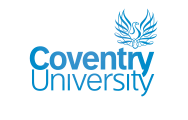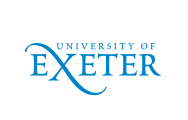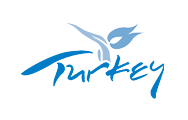

This project has received funding from the European Union’s Seventh Framework Programme for research, technological development and demonstration under grant agreement no 612789
RECOMMENDED TOPICS
The following points refer to the 9 proposed topics of the call for book chapters. They must be interpreted as open research themes and cues to start from.
1. Co-creation and living heritage for social cohesion
The contributions addressing this topic are expected to illustrate research results in the domain of the ‘living heritage’, intended as the dynamic side of Cultural Heritage: heritage which is continuously transforming, shaped and transmitted from generation to generation. It also represents the participatory side of Cultural Heritage: not a monument to be admired for its unreachable greatness and respected for its authority, but something (tangible or intangible) to be told with an ever new story. Contributions can address questions as: How cultural institutions (e.g. museums) can renew themselves, finding new active forms of interaction with their audiences? How can they create the conditions for the visitors to leave the role of observers and instead be active contributor to the development of heritage? How can the consumers become producers of Cultural Heritage? How can Cultural Heritage be co-created?
2. Mediated and unmediated heritage
The contributions addressing this topic are expected to provide further understanding of the relationship between “living” or contemporary media and what is formally considered to be Cultural Heritage.
Mediated heritage is cultural heritage that is managed, held, curated, transmitted in or through institutions (e.g. museums, archives and libraries or government agencies or broadcast agencies) and unmediated heritage is cultural heritage that is independently produced, transmitted, shared or exists without the management involvement or mediation of other agencies/institutions. Nowadays, the unmediated heritage phenomenon is enhanced by the emergence of new media technologies, which give a great expressive power especially to the young generations, communicating via photographs, video and social networks. People have always wanted to tell stories, to share meanings and contents; thanks to the new technologies, the possibilities for the public to capture and access information have drastically increased.
Such spontaneous creation of new media content is known as living media; through living media, teens are actively involved in what is called participatory culture: one with relatively low barriers to creative expression and civic engagement. Some museums and cultural institutions have already started to use the new media tools in order to establish co-creative links with their audiences: they offer to the public platforms where people meet for creating, sharing and connecting with each other around cultural contents. But living media happens mostly outside the walls of heritage institutions.
The contributions are invited to present different views about how establishing a participatory link between the people, the media and museums so that people see themselves and their experiences as part of history rather than as mere observers.
3. The context of change in which Cultural Heritage is held, preserved, curated and accessed
The contributions addressing this topic are expected to explore how the practices of memory and cultural institutions are affected by the changes in the European societies. The contributions are invited to present their answers to the following questions: How digital practices are transforming the traditional cultural heritage practices of cultural institutions, such as curation and preservation? How digital exhibitions and virtual performances can stimulate innovative interactions with cultural audiences and increase their engagement with heritage?
4. Identity and belonging
The contributions addressing this topic are expected to explore which is the impact of Cultural Heritage on issues of identity and belonging. How the introduction of new digital practices in the Cultural Heritage domain is contributing to such impact? What are the potential and limits of digital practices in the exchange between citizens, young people, students, researchers and Cultural Heritage institutions? What the opportunities offered by the availability of large volumes of cultural contents in digital format for the construction of a European multicultural identity? What is the potential of digital technologies to enable diverse communities to reflect on their own cultural identities and to engage with “mainstream” Cultural Heritage?
5. Cultural Heritage and places: place making, promotion and commodification of Cultural Heritage resources
Many places, whether urban or rural, have developed strategies for the inter-linked exploitation of cultural resources through the promotion of spaces, transformation of territories, sponsoring of product and quality attributes to appeal to tourists and day trippers, as well as the local population. The contributions addressing this topic will provide answers to the following questions: What are the best practices for promoting places and communicating promotion to the potential consumers? How distinctive place images can be created in the context of increased place-making efforts across the European Union?
Moreover, the decision-making processes around the transformation and re-building of heritage places and territories demand excellent communication between administrators, Cultural Heritage managers, citizens, experts, the economic sectors. How the dialogue among these communities can be improved? How, ultimately, the citizen’s identification with the urban quarter they live in can be increased?
6. Structures for community and territorial cohesion
The contributions addressing this topic are expected to consider how rural and urban places can be connected by networks of multiple dimensions. The contributions will also discuss about the role of digital technologies in facilitating these connections and what are the benefits of this digital form of Cultural Heritage transmission.
7. Skills and jobs
The contributions addressing this topic are expected to investigate the new contexts in which traditional hand-making skills and knowledge can be transferred into advanced manufacturing sectors and exploring how old skills within new contexts can generate competitive advantage for the European creative industries. The contributions will also present reflections about exploring how this form of skill and knowledge transfer can stimulate the opportunities afforded to specific Cultural Heritage sectors such as museums and the contemporary crafts.
8. Economics of culture and fiscal issues
The contributions addressing this topic are expected to discuss about the following questions: Which is the impact of taxation and public-private support on Cultural Heritage? How the fiscal policy can become more efficient in the age of digitisation? How the Public-Private-Partnership can support Cultural Heritage reuse, exploitation and transmission?
9. The move from analogue to digital and new forms of IP (Intellectual Property)
The contributions addressing this topic will present the last progresses in the understanding of copyright and intellectual property rights laws and how they relate to Cultural Heritage practice in the digital age.
Europe’s diverse Cultural Heritage both made and in the making, provides a rich source of material from which we can both understand our past and use to create new artefacts. Using transformative methodologies we have the capacity to deepen our understanding of the sector and to inform our future. A key element in the framework supporting the Cultural Heritage sector is that of intellectual property rights in general and of copyright in particular. Our Cultural Heritage is comprised of literary, dramatic musical and artistic works: in other words, those works that depend upon copyright for their existence. But copyright brings complex challenges. Focussing on the single author and rooted in the protection of text it has grown to protect all manner of artefacts, objects and performances through the grant of exclusive rights to the owner. As such, it provides key challenges to contemporary co-creation methodologies and outputs, to transforming our Cultural Heritage from the analogue to the digital and to developing a sustainable legal framework for the protection, promotion and development of our Cultural Heritage into the future. The contributions present different points of view and results of the research on the various aspects of this important topic.
Official Media Partner: Digital Meets Culture.
Designed and powered by: Promoter SRL.










